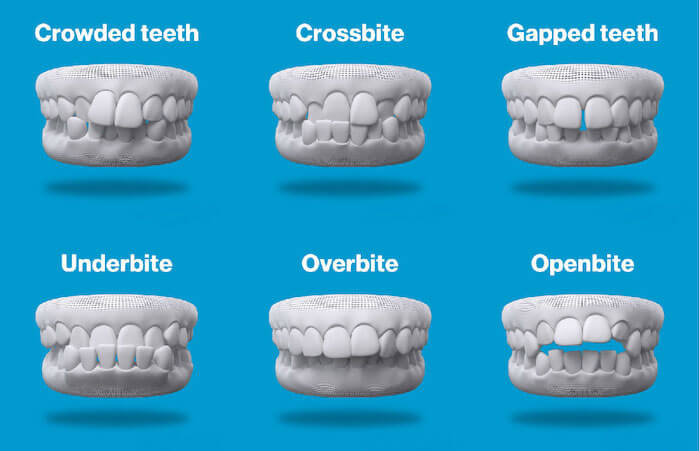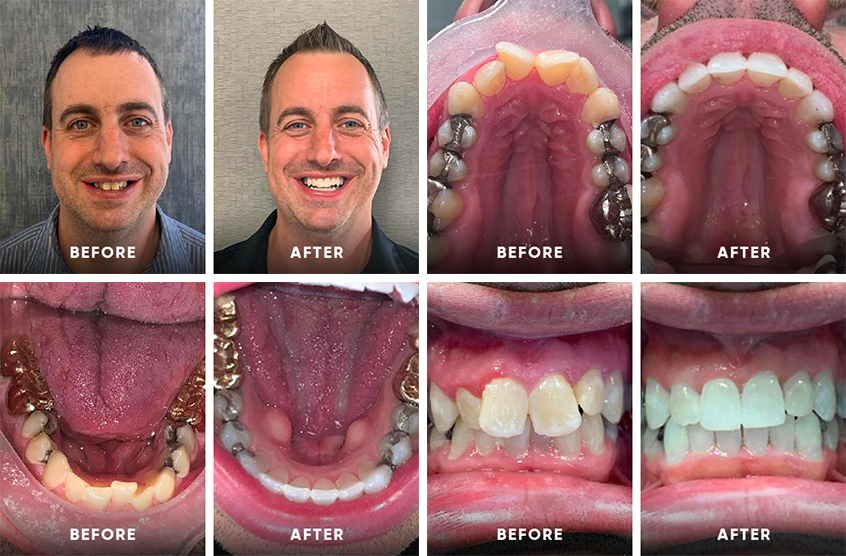Discover the Conveniences of Invisalign for a Perfect Smile Makeover
Discover the Conveniences of Invisalign for a Perfect Smile Makeover
Blog Article
Invisalign vs. Typical Braces: Which Alternative Is Right for You?
When taking into consideration orthodontic therapy, the selection between Invisalign and typical dental braces offers several crucial variables that warrant mindful examination. Invisalign supplies a very discreet option with detachable aligners, while conventional dental braces supply a more noticeable yet effective service for severe imbalance.
Review of Therapy Alternatives

On the other hand, standard braces contain steel brackets and cables that are bonded to the teeth. This technique applies continual pressure gradually to achieve positioning. While efficient for intricate orthodontic issues, traditional braces call for normal check outs for adjustments and can pose challenges in keeping oral hygiene due to the trouble of cleaning about brackets and cables.
Both alternatives have their merits, and the choice often hinges on particular oral conditions, way of living preferences, and individual conformity. Eventually, speaking with an orthodontic professional is important for establishing the most suitable therapy plan customized to private requirements. Recognizing the nuances of each choice can dramatically affect the overall success of orthodontic treatment.
Aesthetic Factors To Consider
A significant element affecting the choice in between Invisalign and conventional braces is the aesthetic allure each therapy uses. Invisalign aligners are crafted from clear plastic, making them essentially undetectable when used. This very discreet appearance is especially interesting teenagers and adults who might feel uncomfortable concerning their orthodontic treatment. The capacity to keep an all-natural smile throughout the placement process can considerably enhance the individual's confidence in social and professional settings.
On the other hand, conventional dental braces are composed of metal brackets and cords, which can be extra noticeable. While advancements in orthodontic innovation have brought about the development of smaller sized brackets and colored elastics, standard braces still maintain an even more noticeable account. For some people, the presence of braces might deter them from looking for required therapy.
Ultimately, the selection in between Invisalign and typical dental braces might pivot on individual choices concerning aesthetic appeals. Individuals who prioritize discernment commonly lean towards Invisalign, while those who are less worried about exposure might choose standard braces. Recognizing the aesthetic effects of each option is essential for making an informed decision that lines up with one's way of life and preferences.
Comfort and Convenience

In regards to comfort, Invisalign aligners are removable, enabling clients to enjoy their favorite foods without restriction and preserve optimum dental hygiene. Brushing and flossing are streamlined, as the aligners can be gotten throughout these regimens, whereas standard dental braces require mindful navigating around wires and braces.
In contrast, typical dental braces necessitate regular adjustments, making them much less hassle-free for those with hectic schedules. In general, the comfort and ease of Invisalign make it an attractive choice for many individuals seeking orthodontic treatment.
Therapy Period and Performance
While both Invisalign and traditional dental braces work in correcting oral misalignments, the period of therapy can vary considerably in between the two alternatives. Generally, Invisalign therapy can take anywhere from 12 to 18 months, depending upon the complexity of the situation. The clear aligners function by slowly moving teeth right into their desired placements, and normal follow-ups with an orthodontist help make certain progress continues to be on course.
On the other hand, conventional dental braces usually require a longer dedication, typically ranging from 18 months to 3 years. This is due to their set nature and making use of cables and braces, which can be more efficient for complicated situations and extreme misalignments (Invisalign). The treatment performance of conventional dental braces is well-documented, as they enable specific modifications and greater control over tooth activity
Inevitably, the choice in between Invisalign and standard braces may depend upon both the awaited therapy period and the details oral concerns available. Consulting top article with an orthodontist is vital, as they can supply customized suggestions based on individual requirements, making sure the picked technique aligns with desired durations and results.
Expense Comparison and Insurance Coverage Options
Price plays a significant duty in the decision-making procedure for individuals thinking about orthodontic treatment, whether choosing Invisalign go to these guys or typical braces. Generally, the expense of Invisalign ranges from $3,000 to $8,000, while typical braces usually cost in between $2,000 and $6,000. Variables influencing these costs consist of the complexity of the situation, the duration of therapy, and geographical place.
Insurance insurance coverage can considerably affect out-of-pocket expenses. Several oral insurance coverage plans supply partial coverage for orthodontic treatments, but the specifics can differ extensively. It is vital for clients to evaluate their insurance plan to determine the level of coverage for either alternative. Typically, traditional braces may be more often covered by insurance plans contrasted to Invisalign, which some insurance companies classify as an aesthetic procedure.
Furthermore, a number of orthodontic methods provide flexible layaway plan, making both treatment choices more obtainable. Clients need to ask about potential financing choices and discount rates for ahead of time repayments. Assessing the complete cost, including insurance advantages and layaway plan, is crucial for making a notified decision that lines up with both aesthetic preferences and budget plan factors to consider.

Final Thought
In recap, the option between Invisalign and typical braces rests on multiple factors, including visual preferences, comfort, therapy duration, and cost. Invisalign supplies a very discreet, removable option that assists in dental hygiene and dietary adaptability, while traditional dental braces may be better for intricate oral issues and often come at a reduced cost factor. Inevitably, consultation with an orthodontist is vital to evaluate individual circumstances and establish the most ideal therapy option for achieving optimal dental placement.
When considering orthodontic therapy, the choice in between Invisalign and typical braces provides numerous important elements that merit mindful assessment.Contrasting Invisalign and typical dental braces exposes unique treatment choices for orthodontic modification.While both Invisalign and conventional dental braces are effective in correcting oral imbalances, the duration of treatment can differ dramatically between the 2 alternatives.Expense plays a substantial visit this site right here role in the decision-making process for individuals taking into consideration orthodontic therapy, whether opting for Invisalign or typical dental braces.In summary, the choice in between Invisalign and conventional braces hinges on numerous variables, including aesthetic preferences, convenience, treatment duration, and cost.
Report this page